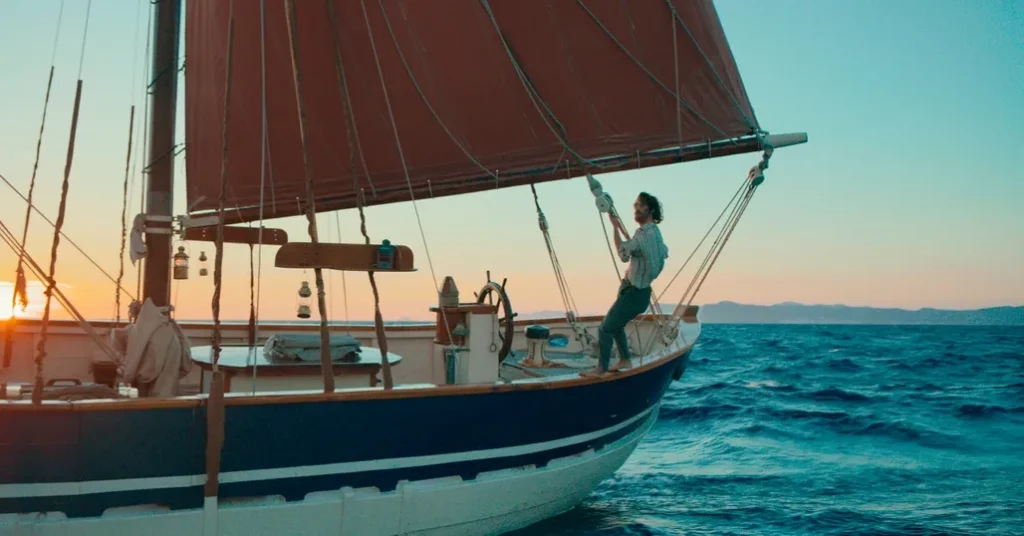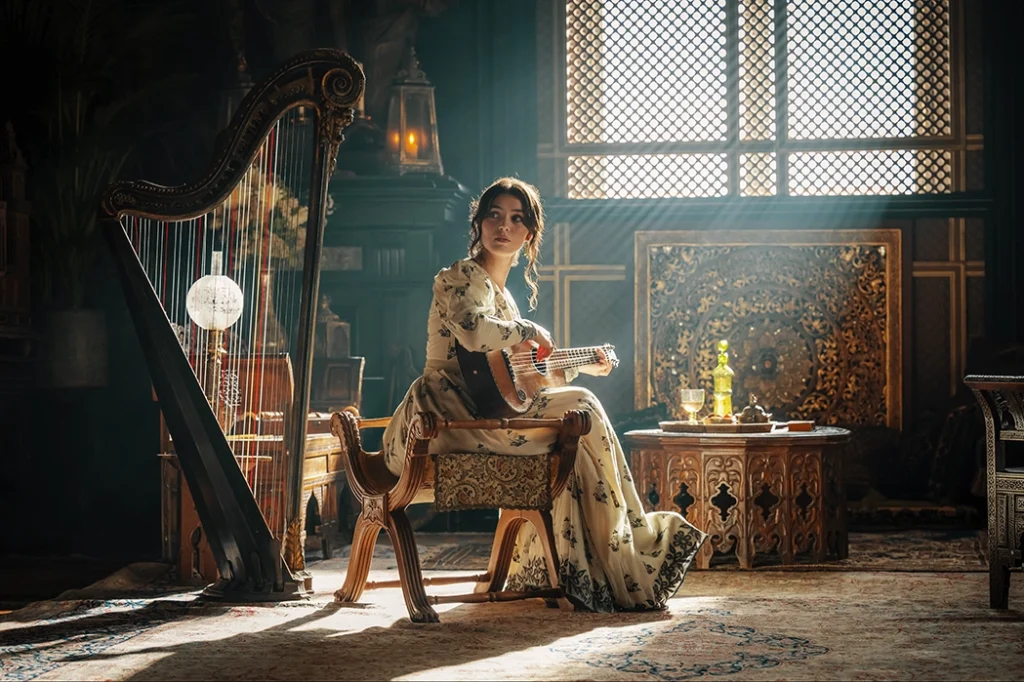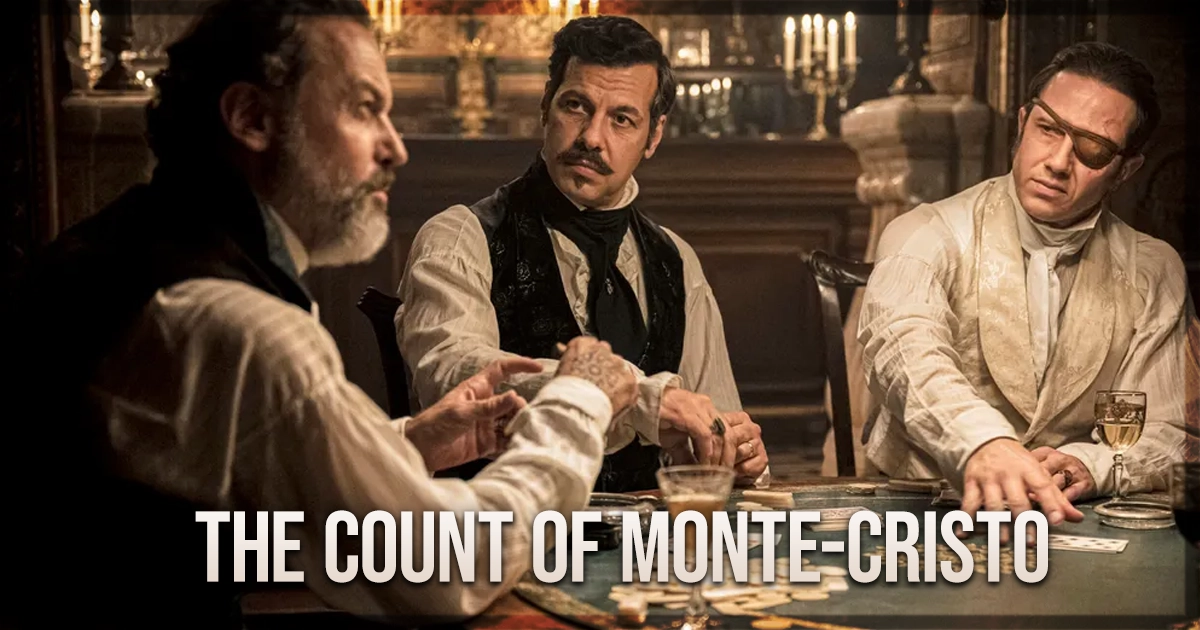Alexandre Dumas’ novel The Count of Monte Cristo is kind of the ur-text for the modern adventure story. Published in 1844, it has it all: treachery, sword-fighting, injustice, long cons, false identities requiring elaborate disguises, secret children, hidden treasure, beautiful ladies, villains becoming heroes, heroes becoming villains, and revenge served ice cold. It was last adapted for the big screen in 2002, in an American version starring Jim Caviezel that’s fallen into deserved obscurity. Since then, the French film industry has tired of Hollywood hogging all the blockbusters for itself and has decided to throw everything it has into filming its own superhero stories for the big screen.
Last year director Martin Bourboulon successfully tackled The Three Musketeers (also based on a novel by Mr. Dumas) in a two-parter starring François Civil, Romain Duris, and Eva Green. Now, the French film industry has come for The Count of Monte Cristo with a three-hour runtime, two directors (Matthieu Delaporte and Alexandre de la Patellière, who also wrote the script), and one magnificent eye for spectacle. From the early underwater shot of a woman in a white dress drowning in front of a shipwreck on fire to the final shot, which makes plain how much the Pirates of the Caribbean series owes to this tale, every second of this movie screams epic. It’s about as long as a movie can be, but the relentless push of the story ensures that you’re riveted to the bitter end.

The story of The Count of Monte-Cristo
Edmond Dantès (a cartoonishly handsome Pierre Niney) is the quick-thinking sailor who dives into save the drowning lady (Lily Dupont). On return to port, the ship’s captain Danglars (Patrick Mille), is fired, and Dantès is promoted, meaning he now earns enough to be allowed to marry his secret financée Mercedes (Anaïs Demoustier). Alas, in the middle of their wedding, Dantès is arrested for treason, as the lady he saved was a Napoleonic spy and had concealed evidence of her activities in his room on the ship.
But the lady’s brother is the nation’s chief prosecutor, Villefort (Laurent Lafitte), who cannot afford to have a traitor in the family. And speaking of family, Mercedes has a cousin, Fernand de Morcerf (Bastien Bouillon) who would much prefer Mercedes marry him instead. So the three men collude to frame Dantès and have him sent to prison, where he spends years rotting in an oubliette in a castle on an island.
Fortunately, the next oubliette is inhabited by Abbé Faria (Pierfrancesco Favino, whose presence in the film prevented it from competing in this year’s Cannes Film Festival, as he was on its jury). Abbé Faria is the last person who knows where the secret treasure of the Knights Templar is hidden, and if it takes him a million years, he will escape from the castle and help himself. Together with Dantès, it takes about a decade, but it is not all smooth sailing when Dantès arrives on a small island called Monte Cristo. It takes longer still for Dantès to return to France.

The grand return is only for vengeance, not only against the three men who imprisoned him, but also to make Mercedes suffer. She was told Dantès was dead, but obviously, that was no excuse for her to be manipulated into marriage with Morcerf and have a son named Albert (Vassili Schneider). To this dastardly end, Dantès has all the money in the world and a team of two, orphans both: André (Julien de Saint Jean), who will pose as a prince, and Haydée (Anamaria Vartolomei), who will get Albert to fall in love with her before dumping him and causing him to kill himself, thereby causing Mercedes endless pain. And while we should not be surprised there were incels and stalker exes 200 years ago, that kind of disproportionate masculine rage never gets easier to bear.
A beautiful adaptation of a classic novel
On the upside, the movie is so beautiful, with gorgeous sets, cinematographer Nicolas Bolduc’s sweeping camera, costumes to die for, and incredibly good-looking actors within them, that it’s very easy to watch. Ms. Vartolomei especially is so jaw-droppingly beautiful the camera kind of stutters every time she walks into frame, with certain shots being held longer simply because she is in them.Fortunately, there’s no question but that Dantès has treated Haydée as anything other than a daughter all these years, and certainly, Haydée has excellent personal reasons of her own for helping Dantès with all this revenge.

The wish that Dantès might have spent his freedom and his treasure making new friends and having a fun time with them instead of nursing old grudges to this exhausting length is by the bye, of course. The complex way in which Dantès’ plan comes together is handled beautifully, with de Saint Jean doing large parts of the heavy lifting in the later swordfight and courtroom scenes. Mr. Niney carries the film with ease, managing to depict Dantès’ journey from young charmer through righteous crusader to jaded old man wondering if revenge was what he should have lived for.
On the downside, The Count of Monte Cristo really could have done with an intermission. There’s so much happening and so many time jumps – one year later, two years later, ten years later – that a little breathing room could have been built in. The three villains are not terribly memorable, and while they didn’t need to be the Riddler, the Joker, and the Penguin, a little more could have been done to raise their stakes. But this is nitpicking on what is an expert adaptation of a huge story, told with the appropriate fervor and scope, and certain to ensure the French film industry continues to have a great time bringing its classics home.
The Count of Monte Cristo recently screened at the Cannes Film Festival.
Learn more about the film at the Cannes website for the title.
You might also like…
Review: ‘The Three Musketeers: Milady’ Concludes Martin Bourboulon’s Grand Epic


